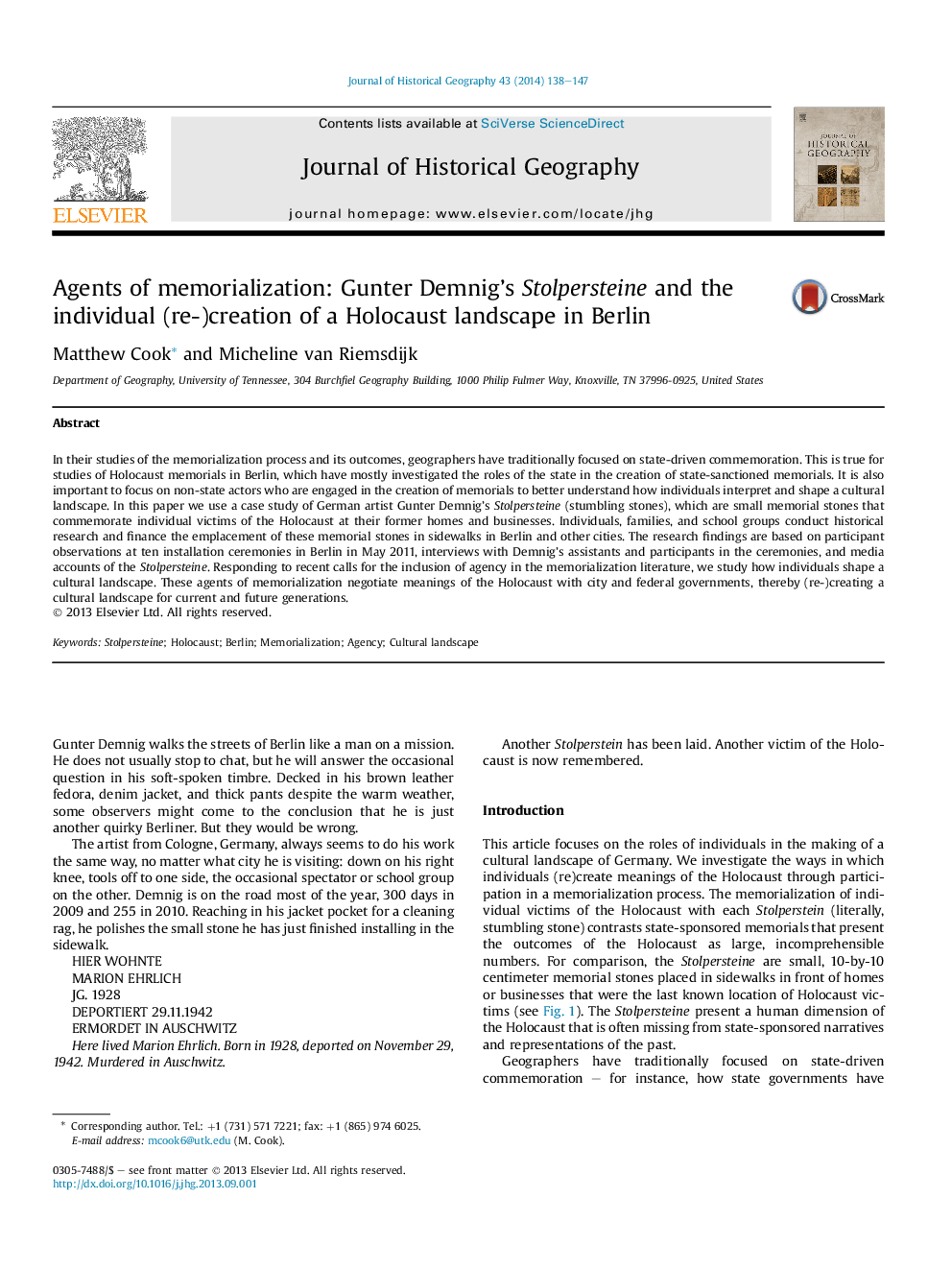| Article ID | Journal | Published Year | Pages | File Type |
|---|---|---|---|---|
| 7448230 | Journal of Historical Geography | 2014 | 10 Pages |
Abstract
In their studies of the memorialization process and its outcomes, geographers have traditionally focused on state-driven commemoration. This is true for studies of Holocaust memorials in Berlin, which have mostly investigated the roles of the state in the creation of state-sanctioned memorials. It is also important to focus on non-state actors who are engaged in the creation of memorials to better understand how individuals interpret and shape a cultural landscape. In this paper we use a case study of German artist Gunter Demnig's Stolpersteine (stumbling stones), which are small memorial stones that commemorate individual victims of the Holocaust at their former homes and businesses. Individuals, families, and school groups conduct historical research and finance the emplacement of these memorial stones in sidewalks in Berlin and other cities. The research findings are based on participant observations at ten installation ceremonies in Berlin in May 2011, interviews with Demnig's assistants and participants in the ceremonies, and media accounts of the Stolpersteine. Responding to recent calls for the inclusion of agency in the memorialization literature, we study how individuals shape a cultural landscape. These agents of memorialization negotiate meanings of the Holocaust with city and federal governments, thereby (re-)creating a cultural landscape for current and future generations.
Related Topics
Social Sciences and Humanities
Arts and Humanities
History
Authors
Matthew Cook, Micheline van Riemsdijk,
